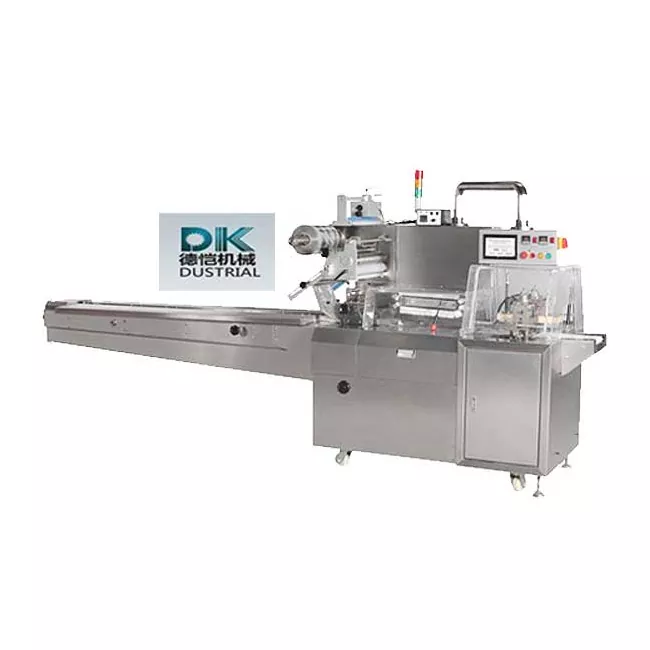The Pillow Packaging Machine: An In-Depth Look at a Packaging Marvel
2025-11-05
In the dynamic world of manufacturing and product distribution, efficiency, preservation, and presentation are paramount. At the heart of countless production lines, from food and pharmaceuticals to hardware and consumer goods, operates a machine of remarkable versatility and reliability: the pillow packaging machine. Known for creating the distinctive "pillow" pouch—a sealed bag with gathered ends that resemble a pillow—this equipment is a cornerstone of modern flexible packaging. This article delves into the fundamental principles, components, and operational workflow of this indispensable technology.
The Core Principle: Form, Fill, and Seal
Pillow packaging machines are a specific type of Form-Fill-Seal (FFS) machine. Their primary function is to create a package from a roll of flat, flexible film, accurately deposit a product into the newly formed bag, and hermetically seal it, all in one continuous, automated process. The "pillow" shape is a direct result of this specific forming method and the type of seals applied.
The process begins with a roll of packaging film, typically a multi-layered laminate. These laminates are engineered to provide specific barrier properties against moisture, oxygen, and light, ensuring product freshness and extending shelf life. Common materials include Polyethylene (PE), Polypropylene (PP), Polyester (PET), and metallized films.
The Step-by-Step Operational Workflow
A standard horizontal pillow packaging machine operates through a meticulously synchronized sequence:
1. Film Unwinding and Guidance: The roll of flat film is mounted on an unwind shaft. A tension control system ensures the film is fed smoothly and consistently, preventing wrinkles or tearing. Guide rollers and sensors maintain the film's correct lateral position throughout the machine.
2. Forming the Tube: The flat film is drawn over a custom-shaped metal component called a forming collar. This ingenious device gently folds the flat film into a cylindrical shape around a vertical tube, known as the filling tube. The longitudinal (vertical) edges of the film are overlapped.
3. Longitudinal Sealing: As the film travels down over the filling tube, a longitudinal sealer—often a heated belt or a rotary sealer—applies heat and pressure to the overlapped edges. This creates a continuous, strong seal along the back of the package, transforming the flat film into a persistent, moving tube.
4. Product Metering and Filling: The product to be packaged is fed into the top of the filling tube via a product conveyor or a volumetric, auger, or weigh-scale filler. The timing is critical; the product must drop into the tube at the precise moment to be encapsulated by the film tube below. For free-flowing products like nuts or candies, this is straightforward. For more complex items like bakery goods or hardware, specialized feeding systems are used.
5. Cross-Sealing and Separation: This is the stage where the individual "pillow" packages are created. A pair of heated sealing jaws, synchronized to the film's movement, close together. They perform two crucial functions simultaneously:
They create the top seal of the current package.
They create the bottom seal of the next package.
As they seal, they also separate the finished package from the continuous film tube. This is often achieved with a perforating knife or a cutting wire integrated into the jaws. The sealing jaws are the heart of the machine, and their temperature, pressure, and dwell time are precisely calibrated for the specific film material.
6. Discharge: The finished, sealed pillow package is then discharged onto a conveyor belt, ready for collection, cartoning, or palletizing.
Key Advantages of Pillow Packaging
The widespread adoption of pillow packaging machines is due to several compelling advantages:
1. High Speed and Efficiency: These machines can operate at astonishing speeds, from dozens to hundreds of packages per minute, making them ideal for high-volume production lines.
2. Cost-Effectiveness: Using roll stock film is generally more economical than pre-made bags. The process minimizes material waste and reduces labor costs through full automation.
3. Product Preservation: The hermetic seals and availability of high-barrier films provide excellent protection, crucial for perishable goods.
4. Versatility: With minimal changeover parts, a single machine can often package a wide range of product sizes and types.
5. Compact Product Profile: The pillow pouch is space-efficient, reducing storage and shipping costs compared to rigid containers.
In conclusion, the pillow packaging machine is a masterpiece of engineering simplicity and efficiency. Its ability to seamlessly form, fill, and seal packages at high speeds makes it an irreplaceable asset in countless industries, silently ensuring that products reach consumers in perfect condition.
 English
English




